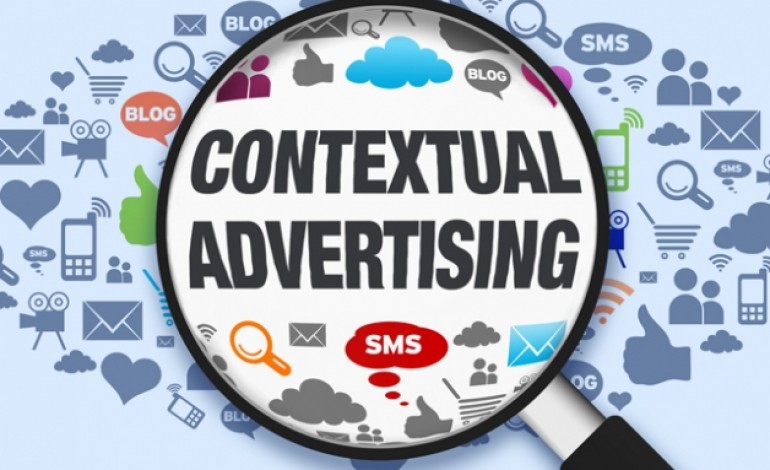
The Internet has become a vast realm of information and activities for we humans so the contextual advertising plays a critical role in order to build the biggest and oldest brand for the generation.
In addition, the World Wide Web (WWW) has opened a door of opportunities for the online advertising market.
It means that there are more businesses flourishing and more ways of making money are being created, which includes monetizing websites.
Of these, contextual advertising is one such type of online commercial activity that is growing rapidly today.
The term ‘contextual advertising’ generally refers to a type of targeted advertising where ads are selected, personalized and delivered to websites (and consumers) by automated systems.
You most probably have seen such as when you visit websites on your devices. We will cover more about contextual advertising on this blog.

Here we are discussing some important points about contextual advertising:-
- Definition
- How contextual ads work
- The common form of contextual advertising
- Elements of contextual advertising
- Types of contextual advertising
- Advantages
- Disadvantages
- Summary
Definition: Contextual Advertising
It is a process of advertising that placement of ad campaigns on websites or site pages that are directly relevant to the ad you are running.
In this advertising, automated systems display ads related to the content of your site based on your keyword targeting.
One of the most common examples of contextual advertising is Google AdSense.
How Contextual Ads Work
Contextual advertising works primarily on algorithms, which are basically computer codes that ascertain information and behaviour of presenting ads, or so-called, personalized ads to individuals whenever they visit a site.
Thus, it is totally a dynamic approach, and the main use of contextual advertising is to create relevancy and display ads that can interest a visitor and also make it appealing to him/her.
From the business point of view, contextual advertising is gaining importance and its use is widespread.
Whether you are using online software or viewing websites, you will see ads that pop up on your screen, delivering interest-based ads to you every now and then.
Contextual advertising can be seen typically on banners and pop-ups of websites and is largely based on the keywords on the particular page a person is visiting.
Search engine advertising is another very common place where contextual advertising is used, which you often get to see when you search for a specific or any random product or service online via Google, Bing, Yahoo, etc.
Sometimes, a site can run ads for a particular company which could also turn out to be contextual advertising that visitors stumble upon.

Most Common Forms of Contextual Advertising
Displaying advertisements on the internet has gained immense popularity over the years.
There are, in fact, several forms of online contextual advertising that numerous businesses and enterprises make use of on their websites to generate revenue and profit.
Well, not just businesses, but freelancers and individuals too, have started taking greater benefits from such online advertising platforms, just to earn themselves a little more money.
Below we are going to show you some of the common yet popular forms of online contextual advertising which you can use on your website and monetize from it.
Meta tags
Meta tags are important and these have a direct effect on search engines. In search engine optimization (SEO), meta tags are usually displayed as small pieces of text items in the search results.
In order to make them as attractive as possible, you must ensure that meta tags on your website are unique for each and every page.
Thus, both a relevant title tag and description tag should be able to persuade a visitor to click on the link in the search results.
Search engines like Google, Bing, and Yahoo show meta tags in their search results (shown both in title and description of a search result).
You will have a direct influence on your presentation and by doing so, you will manipulate the click-behaviour of your visitors and easily convert them into customers.
Not only does Google show your description tag, but by adding a better and more relevant text, more people will click on the link and that provides you with a better CTR (click-through rate). The CTR has a huge influence on your website’s ranking.
A relevant and interesting text can surely increase the number of clicks to your website.
Info links
Very few people are aware of info links. It is, in fact, one of the widely used contextual advertisements on websites.
Infolinks, in contextual advertising, allow elegant solutions that are more natural and doesn’t look like an advertisement at all.
A fine example is Wikipedia, which uses info links on its website for contextual advertising.
When you access information on Wikipedia page, you will see several links that provide additional information about the topic as well as included in the information are certain words. Which are in fact, info links (displayed as pop-ups) that allow for better contextual advertising on the website.
Similarly, you will find several websites that make use of info links for advertising products or services to target individuals.
Click-through Advertisements
Click-through involves the process of a visitor clicking on a web advertisement and then going directly to the advertiser’s website.
It also called as ad clicks or requests. While click-through is often the most immediate response to an advertisement, it is not the only interaction.
There may be some visitors who would prefer to type the URL of the particular website in order to visit their pages, rather than going through by means of an ad.
The average click-through rate for a web-based banner ad is only 0.5% at par.
Pop-up Advertisements
Another very common form of contextual advertising is the use of pop-up ads on websites. This type of advertisement allows businesses and individuals to target their audiences effectively. Using pop-ups, you are able to deliver a clear message to your audience about the relevant product or service that is being offered to them. This can be anything from merchandise, food items, holidays or travels to offering a discount on coupons, etc.
Keyword Advertisements
Using a competitor’s trademark as a keyword in an internet search engine does not amount to trademark infringement if the search result is clearly recognizable as an advertisement.
Most websites focus on specific or relevant keywords in order to get higher ranking on search engine sites.
Hence, the use of broader keywords may depend on the content as well as the scale of the targeted audience.
For instance, if you are advertising about a soft drink, such as Coca Cola, then using the keyword ‘Diet’ would be considered too broad for this product.
Therefore, using the keyword ‘Coca Cola’ for advertising the product would help target a highly relevant audience.
Elements of Contextual Advertising
Different brands will be uses different data for different products. The location could make all the difference for a hotel and restaurants, while weather would be the primary pieces of information for ice cream and clothing brands.
Some common elements are as follows:-
- Location
- Time
- Day
- Weather
- Language
- Device
- Medium
Types of Contextual Advertising
Nowadays there are three common and effective kinds of contextual advertising are as follows:-
- Banners Ads:- It is based on the implementation of graphics or adoptive ads in separate blocks of the partner sites. It can be both static and dynamic depends on the policy of the website.
- Text Ads:- It works when you use google for search something. Ads are placed above or under the organic result of google search. Contextual text ads help potential customers and buyers quickly find exactly the product and service hat they were looking for.
- Video Ads:- This advertising is becoming very popular today and usually hosted on partner sites and, naturally, on the most popular YouTube video hosting accounts. Now, it is one of the most effective ways of promoting their products, services, and firms.
At that time, there are several kinds of contextual advertising. Some most effective of them are follows:-
- Screensaver Contextual video Ads:- This type of ads are very short commercials, the duration of which does not exceed 6 seconds which are placed at the beginning, middle or end of the main video.
- TrueView in-stream:- This video advertising is placed everywhere the main video – in its beginning, middle, and end. You can skip it only by viewing the initial 5 seconds of the ad.
- TrueView Campaigns:- This types of ads is additional version of TrueView in-stream because they are shown to the user in the same format as TrueView in-stream with some additional placement of information about the goods or services of the advertiser.
Advantages
Some advantages of contextual advertisement are:-
- Higher conversion
- Greater engagement
- Relevant ads as per the content don’t allow the user
- Saves necessary impressions
- Automatically matched Content or ads
- More benefit for publishers as higher chances of clicking on the ads
- Quick return result
- Fair broad coverage of the targeted audience
- Uniform expenditure and optimization of budget
- You pay only for the result (called ‘clicks’)
Disadvantages
There are also several disadvantages, some are as follows:-
- It distracts people away from the content they want to read
- The competitor’s ads might get placed along with your ads
- It is not enough to promote a large organization
- A short time of existence
- People might get annoyed if the location of the ad is between the content.
Contextual Advertising is Fundamental for Internet Marketing
Contextual marketing is a cost-effective way to generate more sales as well as reaching a target market.
Thus, the growing popularity of online advertising has prompted more businesses to shift a significant part of their marketing budgets to the Internet.
Many companies, organizations, and enterprises are now placing ads on websites of various types, including magazines and newspapers, etc.
The key rule for, making your contextual advertising successful is to place the relevant ads at the right place on your website and easily attract visitors to gain revenue.
